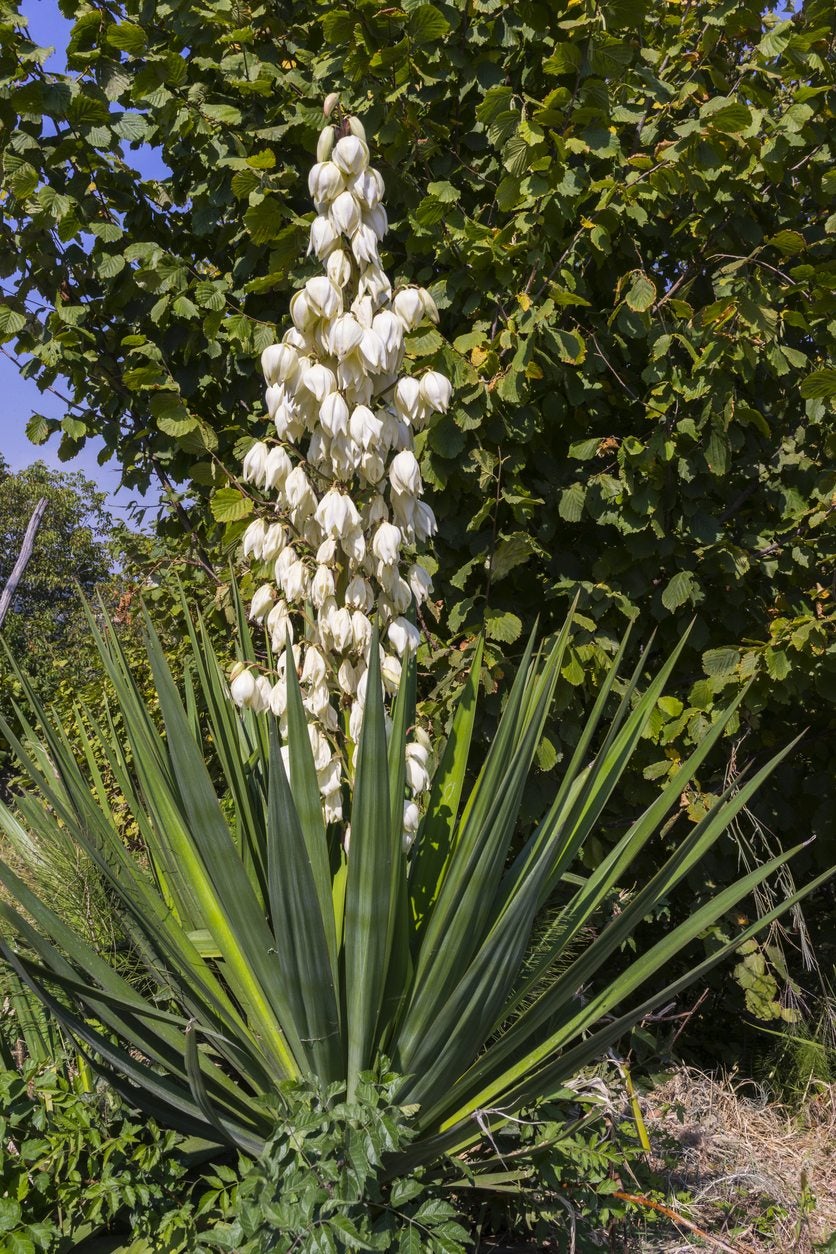Yucca Transplanting: How To Transplant A Yucca In The Garden


Sometimes, a plant simply outgrows its location and needs to be moved. In the case of yucca, the timing is as important as the method. Yuccas are full sun plants and need well-draining soil. Other considerations for this large, prickly leaved plant are issues of comfort. It is probably best not to situate the plant where it can make walking or playing uncomfortable due to its sharp leaves. Read on for tips on how to transplant a yucca.
When to Move Yuccas
Moving yucca plants takes preparation and good timing. Some specimens may be very large and old and might need professional help. At the very least, it is a good idea to have an extra hand or two, as these are cumbersome plants with sharp leaves. Choose your site very carefully when transplanting yuccas, as they prefer not to be moved frequently.
Expect to baby it for a few months and don't be surprised if a bit of transplant shock occurs. The plant will usually shake it off in a week or so. As they say, "timing is everything." Knowing when to move yuccas will give you the best chance of success. For most plants, it is best to transplant when the plant is dormant. Yucca transplanting can technically be done at any time of the year.
However, in regions with mild winters, it is best to move the plant in fall. That way the roots can establish before the hot temperatures arrive. If you are moving yucca plants in spring, remember they will need extra water as things heat up. Choose a location with at least 8 hours of sunlight in a site with well-draining soil.
How to Transplant a Yucca
Width and depth of the hole are the first concern. Yucca can grow deep roots and have a width of a foot (30 cm.) beyond the widest leaves. Dig out around the plant and gradually deeper under the crown. Set a tarp off to one side and use the shovel to lever the plant out onto it.
Next, dig a hole as deep as the root system and twice as wide in the transplant location. One tip on moving yucca plants - add a little soil to the very center of the new hole, which will rise the stemless yucca up a bit when planted. This is because, once the soil settles after watering, the yucca may sink into the soil.
That can cause rot over time. Spread out the roots and settle the plant into the new hole. Backfill with loose soil, tamping around gently.
Gardening tips, videos, info and more delivered right to your inbox!
Sign up for the Gardening Know How newsletter today and receive a free copy of our e-book "How to Grow Delicious Tomatoes".
Post Yucca Transplanting Care
After transplanting yucca, some TLC may be necessary. Yucca moved in fall should be watered once per week if no precipitation is expected. After two weeks, decrease watering to once every other week. In spring, temperatures are warmer and evaporation occurs.
Keep the plant moderately moist for a month and then decrease watering to every two weeks. Your yucca may experience some shock that could cause discolored leaves. Remove these once new growth begins to show. Use organic mulch around the base of the plant to discourage weeds and conserve moisture while keeping the ground cool in summer and warm in winter.
In about a month or so, the yucca should be well established in its new home and regular care resumed.

Bonnie Grant is a professional landscaper with a Certification in Urban Gardening. She has been gardening and writing for 15 years. A former professional chef, she has a passion for edible landscaping.
-
 Looking For Plants To Give You The Soft And Fuzzies? Try These 5 Fuzzy Leaf Plant Options
Looking For Plants To Give You The Soft And Fuzzies? Try These 5 Fuzzy Leaf Plant OptionsLovers of texture, drama, silver foliage and tactile plants will adore these special sensory garden additions. These fuzzy leaf plant options will leave you all aglow
By Susan Albert
-
 Get Ready For A Summer Of Hummers! Grow These Full Sun Hummingbird Plants and Flowers
Get Ready For A Summer Of Hummers! Grow These Full Sun Hummingbird Plants and FlowersIf you’re lucky enough to enjoy a sunny backyard, make sure you are maxing out on your pollinator opportunities and grow these full sun hummingbird plants and flowers
By Tonya Barnett